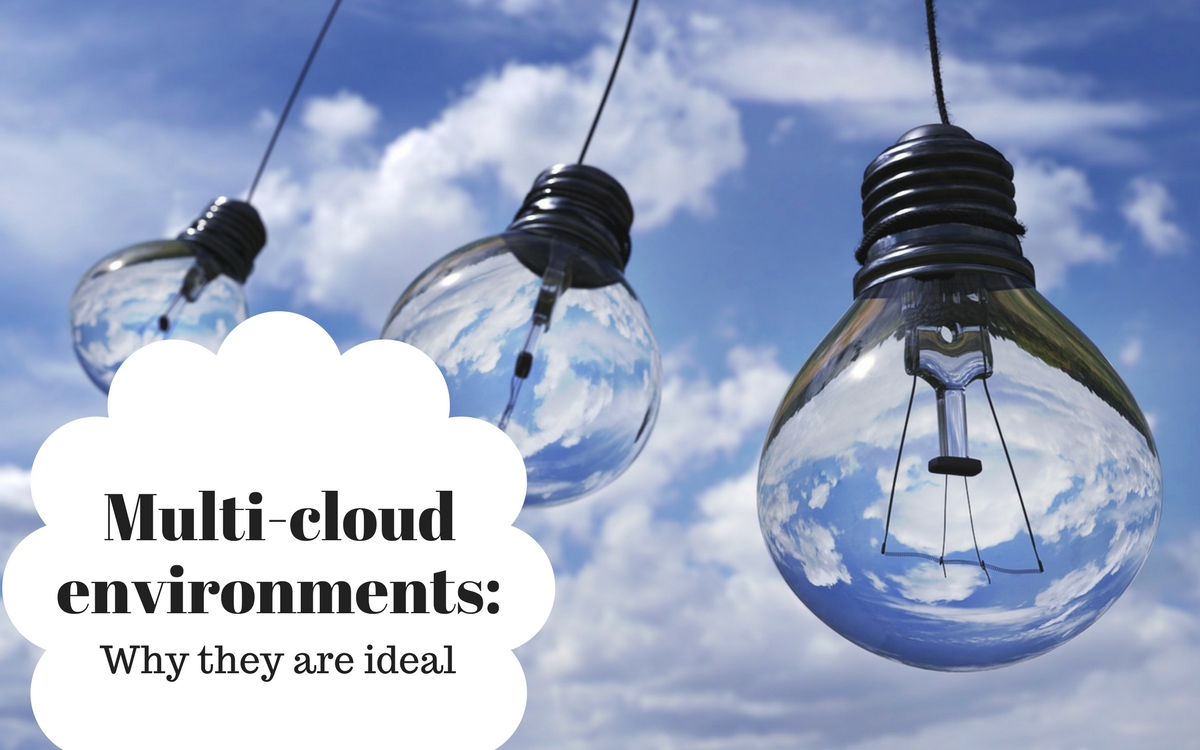In the past few years the conversations surrounding the cloud have become more and more prevalent. This ubiquitous phrase follows you from work to home and has spanned the distance across all verticals and industries.
But…what is it?
When the term “the cloud” is used an image is often conjured of a nebulous digital shape—a non-physical space that can store large amounts of data without taking up physical square footage. However, when conversations fall to the cloud, people often fail to understand that the cloud is not just one thing—it is many things that can perform many functions.
There are multiple variations of the cloud available, both public and private, that can be utilized for a variety of things ranging from storing files to downloading data—all in a digital format that doesn’t have to be accessed from a fixed, physical location. As long as you have access to the Internet with a device, the cloud is at your fingertips.
What are multi-cloud environments and what do we want from them?
“Multi-cloud environments” is a term gaining traction with more and more enterprises as they increase their cloud presences across numerous apps, platforms, and services. However, this terminology means different things to different people.
As many organizations adopt the multi-cloud strategy, the most common definition relates to the use of several distinct cloud services, in some combination, that creates a hybrid model that shares data, application components, and connectivity, or a blend of all 3. It can also be a simple hybrid of cloud services between diverse infrastructure-as-a-Service (IaaS) and Platform-as-a-Service (PaaS) environments or IaaS and various Software-as-a-Service (SaaS) environments that integrate to on-premises and cloud applications.
In fact, the International Data Corporation predicted in a futurescape report last year that more than 85% of enterprise IT corporations will invest in and adopt multi-cloud architectures by 2018.
Why and how multi-cloud environments are beneficial
While there are various discussions around why you should adopt multi-cloud environments in your business infrastructure, here are 4 things to take into account:
- More choices. By having the option to determine which multi-cloud provider(s) and cloud platforms to leverage within your enterprise, you have the opportunity to support a diverse application portfolio at an optimal level. This follows the idea that one size doesn’t fit all as your IT teams are tasked to run an ever-shifting array of workloads.
- Amplified customization. With the broad expansion of cloud deployments comes a fundamental layer of sophistication in building a robust IT environment. A single, standard cloud system might not be the best option for an enterprise with more complex needs and higher traffic volumes. Through the utilization of a multi-cloud model, you can handpick solutions that best support the assorted elements within your IT system. The one-size MIGHT fit all approach is no longer needed, as most cloud services have the ability to speak to each other and allow for IT professionals to monitor them in a more central way.
- Optimal service. If you are seeking to combat latency issues, using several cloud service providers is the way to go. By expanding your IT environment, you create an safety net in the event that one or more applications go down. Including a more dependable IT environment for your organization can maintain maximum availability and uptime for customers. In other words, it improves disaster recovery and geo-presence.
- Reduced costs. With legacy systems, organizations were often forced to pay for more than they needed. The multi-cloud model allows businesses to reduce costs by enabling them to select and pay for services and support what they truly need to maintain their business.
The thread that ties these benefits together is that multi-cloud environments can reduce costs, increase security, and help make your organization more scalable.
Security in the cloud
A common IT desire is the wish for a simplified system—the ability to monitor multiple systems in a more focused and centralized way. An infrastructure that can be monitored can mean a stronger, more secure environment. Unfortunately, security involves complexity. There are 3 things that must be undertaken to help both sides of this problem with multi-cloud:
- Data classification
- Network and application interconnectivity
- Encryption management
With these 3 factors in mind, you can see that multi-cloud systems need to be monitored and controlled accordingly just as any other system you wish to function properly. If this is not addressed, operational issues will begin to stack up, leading to maintenance difficulties with access control, bug patches, and security updates.
The positive? You can avoid countless potholes in the road associated with multi-cloud environments by partnering with a trusted vendor to help manage your cloud services. With this solution under your belt, you can get the benefit of 24/7 support to ensure any issues that arise are resolved swiftly.
Multi-cloud systems are here to stay
Overall, a multi-cloud strategy is transformative for your business. This approach allows you the flexibility to scale offerings, save on hosting, and ultimately provide better solutions to your customers.
Multi-cloud is here and here to stay. Long gone are the days when enterprises worked with one cloud vendor to create a singular IT strategy. The question you should be asking today is why you limit yourself to just one cloud environment when there are new public, private, and hybrid cloud offerings that can create new opportunities for innovation with a multi-cloud infrastructure.








